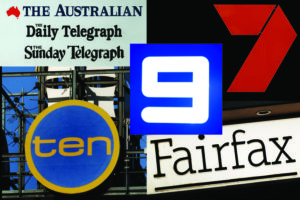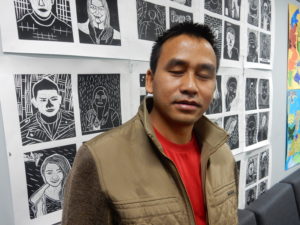Migrants’ media consumption mostly domestic
Newly arrived migrants and refugees mostly get their news and information from Australian sources and a majority favour mainstream traditional media, according to a new survey.
But an overwhelming majority are active on social media using it mostly to keep in touch with friends and family, the survey found.
It found SBS and the ABC were the most frequently used sources of broadcast news and information and an overwhelming majority of new arrivals agreed that it was important for Australia to have a strong independent media.
The survey of 140 new migrants and refugees, commissioned by refugee and migrant settlement agency AMES Australia, also found Facebook the most used form of social media.
 The survey asked newly arrived migrants and refugees where they accessed news and information. Fifty-seven per cent cited mainstream news media, including radio, television and print while 38 per cent cited social media.
The survey asked newly arrived migrants and refugees where they accessed news and information. Fifty-seven per cent cited mainstream news media, including radio, television and print while 38 per cent cited social media.
Eighty-eight per cent, or 123 respondents, said their news and information came from Australian sources while 12 per cent said it was from their home countries.
Asked about whether they knew of SBS, 74 per cent said they did while 67 per cent said they accessed SBS programs.
Of those accessing SBS programing, 40 per cent said they accessed more than five hours each week, 35 per cent said they accessed between one and five hours; and 25 per cent said they accessed less than one hour each week.
The survey found fifty-seven per cent of respondents accessed the national broadcaster, the ABC.
An overwhelming 83 per cent of respondents were likely to use social media on a typical day, the survey found, with 76 per cent of those mostly to use Facebook and 21 per cent LinkedIn.
Forty-one per cent of respondents said they mostly used social media for keeping in touch with family and friends, while 34 per cent they used it mostly for news and information and 15 per cent for searching for work or business opportunities.
Just 10 per cent said they mostly used social media for entertainment.
The survey found migrants and refugees just as active on social media as Australians with 58 per cent using it for more than an hour a day.
AMES Australia CEO Cath Scarth said the survey showed that migrants and refugees new to Australia were interested in local issues and conversations and were keen to keep themselves abreast of news and developments in Australia.
“There have been suggestions that migrants are getting their news exclusively from sources originating in their home countries. This survey shows that they are obviously interested in what is happening here and are sourcing their news from within Australia,” Ms Scarth said.
“It also shows they are using social media to find employment or business opportunities and that they understand the importance of being connected.
“Ultimately, what the survey tells us is that migrants who come to this country have a commitment to it and want to become part of its social fabric,” Ms Scarth said.
Burmese refugee Lian Cungthang, who fled his homeland during the ‘saffron revolution’ in 2007, says says he trusts Australian media more than the press in Myanmar.

Lian Cungthang
“I watch TV news on SBS and I can read the newspapers on my smartphone,” Mr Cungthang said.
“Here it is easy to get news and mostly I can trust it. In Myanmar, you only get told what the government want you to hear,” he said.
Mr Cungthang said he also uses Facebook to get information and to stay in touch with his friends.
The saffron revolution was a series of economic and political protests and demonstrations against the military government.
The protests were led by Buddhist monks, students and political activists, including women. In response to the protests dozens of protesters were arrested or detained.
Laurie Nowell
AMES Australia Senior Journalist













